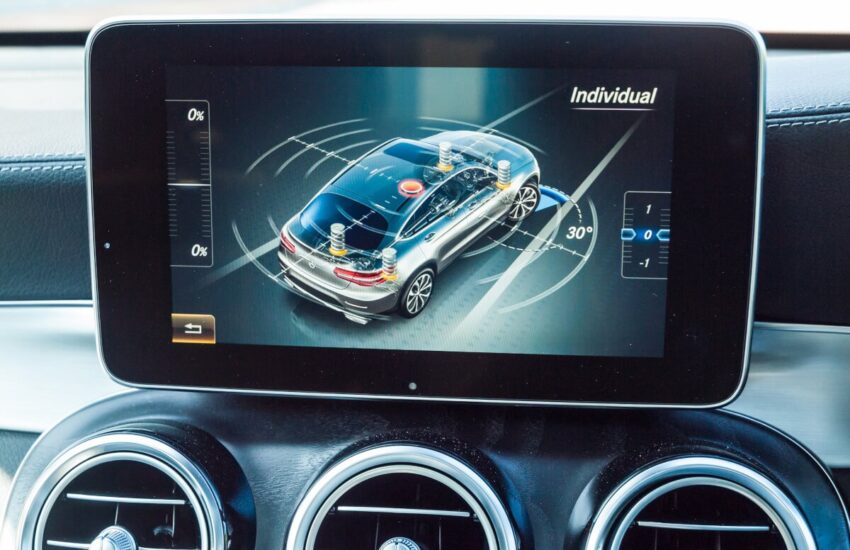In the fast-paced world of automotive technology, infotainment systems have become a pivotal feature for modern vehicles. Gone are the days when cars were simply means of transportation; now, they are equipped with sophisticated systems designed to keep drivers connected, entertained, and informed. With each passing year, new car manufacturers are pushing the boundaries of innovation, offering increasingly advanced infotainment solutions to meet the demands of tech-savvy consumers.
Let’s take a closer look at the evolution of infotainment systems and examine some of the cutting-edge offerings from leading car manufacturers.
The Evolution of Infotainment Systems
Infotainment systems have come a long way since their inception. Initially, car radios were considered the pinnacle of in-car entertainment. However, with the advent of smartphones and the rise of digital connectivity, consumers began to demand more from their vehicles.
The first-generation infotainment systems were rudimentary, often featuring small displays and limited functionality. However, as technology progressed, so did the capabilities of these systems. Touchscreens became commonplace, offering intuitive interfaces that mirrored the user experience of smartphones and tablets.
Today, modern infotainment systems are more akin to multimedia hubs, offering a wide range of features such as navigation, voice recognition, smartphone integration, streaming media, and even vehicle diagnostics. These systems have become central to the driving experience, providing drivers with access to a wealth of information and entertainment options at their fingertips.
Leading Infotainment Systems from New Car Manufacturers
Tesla Infotainment System (Tesla):
Tesla has been at the forefront of automotive innovation, and its infotainment system is no exception. The Tesla Infotainment System is powered by a massive touchscreen display that dominates the center console. It offers features such as internet connectivity, over-the-air updates, navigation with real-time traffic updates, streaming media, and access to a range of apps and services. With its sleek interface and seamless integration with other Tesla features such as Autopilot, the Tesla Infotainment System sets the standard for in-car technology.
BMW iDrive (BMW):
BMW’s iDrive system has long been praised for its user-friendly interface and robust functionality. The latest iteration of iDrive features a high-resolution touchscreen display complemented by a rotary controller for easy navigation. It offers advanced navigation with 3D maps, smartphone integration via Apple CarPlay and Android Auto, voice recognition, and a host of connected services such as weather updates and concierge services. BMW’s commitment to innovation is evident in iDrive’s intuitive interface and seamless integration with other vehicle systems.
Audi MMI (Audi):
Audi’s MMI (Multi Media Interface) system combines a sleek touchscreen display with tactile controls for a seamless user experience. MMI offers advanced navigation with Google Earth integration, smartphone integration via Apple CarPlay and Android Auto, handwriting recognition, and Audi’s signature Virtual Cockpit, which replaces traditional gauges with a customizable digital display. With its emphasis on driver-centric design and cutting-edge features, Audi MMI enhances the driving experience in ways that are both practical and intuitive.
Mercedes-Benz MBUX (Mercedes-Benz):
Mercedes-Benz’s MBUX (Mercedes-Benz User Experience) system represents a leap forward in automotive technology. MBUX features a high-resolution touchscreen display augmented by natural language voice recognition and artificial intelligence. It offers advanced navigation with augmented reality overlays, smartphone integration, personalized user profiles, and an array of connected services such as predictive navigation and adaptive ambient lighting. With its seamless integration of technology and luxury, MBUX sets a new standard for in-car infotainment.
Ford SYNC (Ford):
Ford’s SYNC infotainment system has been widely praised for its simplicity and functionality. The latest iteration of SYNC features an intuitive touchscreen display with support for Apple CarPlay and Android Auto, voice recognition, and FordPass Connect, which offers features such as remote start and vehicle tracking. SYNC’s user-friendly interface and robust feature set make it a standout choice for drivers seeking a seamless connectivity experience.
Wrapping It Up
Infotainment systems have become an integral part of the modern driving experience, offering drivers access to a wide range of features and services to enhance convenience, safety, and entertainment. New car manufacturers continue to push the boundaries of innovation, offering increasingly advanced infotainment solutions that cater to the evolving needs of consumers.
Whether it’s Tesla’s futuristic touchscreen interface, BMW’s user-friendly iDrive system, Audi’s driver-centric MMI, Mercedes-Benz’s AI-powered MBUX, or Ford’s intuitive SYNC platform, there’s no shortage of options for drivers looking to stay connected on the road.
As technology continues to evolve, we can expect infotainment systems to become even more sophisticated, seamlessly integrating with other vehicle systems and offering new features and services to further enhance the driving experience. In the ever-changing landscape of automotive technology, one thing is certain: the future of infotainment is bound to be exciting.
AutoByPayment.com offers accurate estimates of new and used car loan payments based on self-selected credit score, current rebates, down payment, and trade equity or negative equity, without customers having to provide their personal identifying information such as email and phone.
